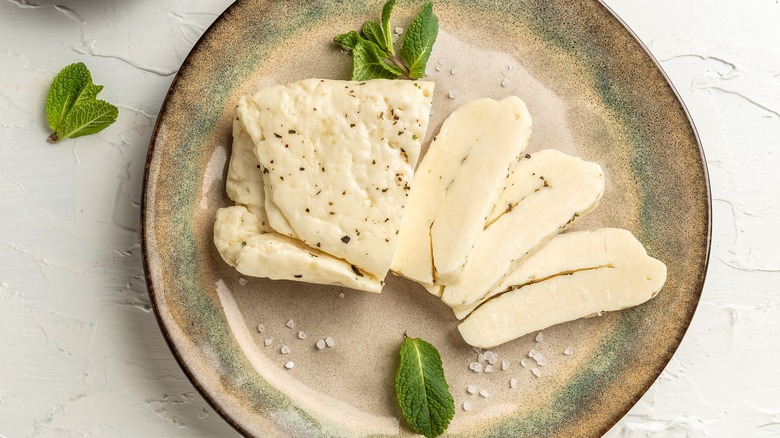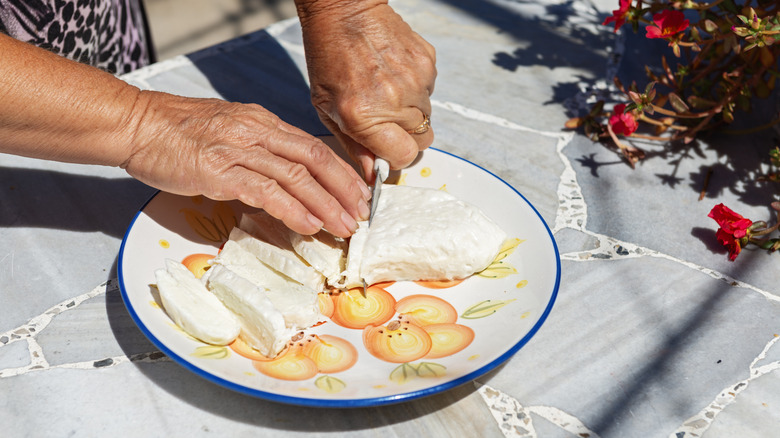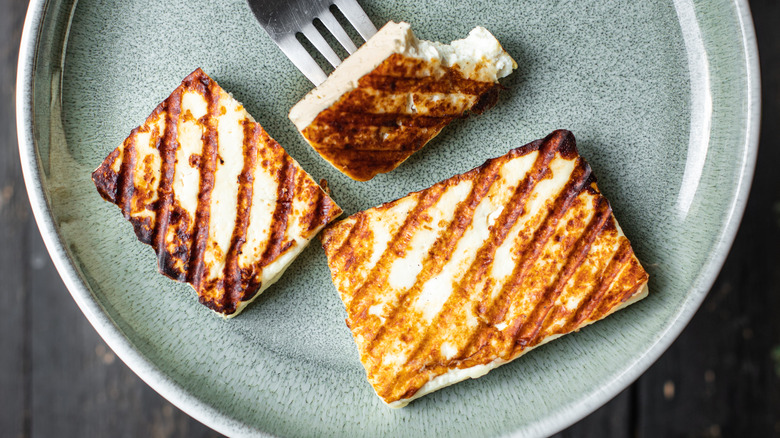Ever Wonder Why Halloumi Is Squeaky?
When you bite into a cheese like halloumi, one of the first things you will notice, even before its mild tanginess and notable saltiness, is a characteristic squeak. The friction between the proteins in the cheese and the enamel of your teeth creates an audible noise. All cheeses have protein, but not all of them squeak when you take a bite. This quality has to do with the literal structure of the proteins, and acids and calcium play a role too.
Basically, cheese is made up of different types of proteins, along with fat and water. Casein proteins create a sort of chainmail that holds everything in place. Calcium acts as a binder that sticks the links in the chain together. Over time, acid starts to break down that calcium glue, which weakens the protein structure. That acid can come from a variety of sources, including various bacteria, rennet used as a starter, or mold on the surface of the cheese.
In order for a cheese to squeak, it needs to be low in acid (high pH) to begin with, and young. This means that the calcium does not break down quickly, and is able to hold the protein web firmly in place — strong protein strands equal a pronounced squeak. Finnish bread cheese and an unaged low-moisture, part-skim mozzarella also have a strong enough protein structure to create a squeaking sound.
What is halloumi cheese?
Halloumi originates from the island of Cyprus, where it has been a fundamental part of the cuisine for several millennia, although this style of cheese can be traced even further back to North African and Middle Eastern nomadic peoples. It now holds Protected Denomination of Origin (PDO) status, which signifies that true halloumi can only come from Cyprus, and must be made with a mixture of sheep's, goat's, and cow's milk. PDO status is the same designation that differentiates parmesan from Parmigiano-Reggiano.
Halloumi is made by adding rennet — enzymes that are found in the stomach lining of animals such as calves, lambs, and baby goats, or in some plants — to milk, causing the curds to separate from the whey. The curds are skimmed, pressed, and then cooked in a salt brine. The result is a bouncy, dense, squeaky block that can be easily sliced, cubed, or grated.
How to enjoy halloumi cheese
You can eat halloumi just as it is for a salty, mild, springy experience. For some, it may be a little on the bland side, so it is a great candidate for marinating in oil, citrus juice, herbs, and spices. The texture can definitely stand up to it.
Because of its hearty consistency and resistance to melting, halloumi can also be cooked. When it is, it transforms, developing a crisp, golden-brown exterior and a softened — but not too gooey — center. There's no need to use dredging, breading, or even oil. The cheese itself develops a delicious crust with no additions. Try pan-searing it to make this fried halloumi and avocado salad, or throw it on the grill for these fig and halloumi skewers.
To take your taste buds on a trip to the Mediterranean, serve simple, crisp halloumi as part of a mezze plate spread. Pair it with other traditional Cypriot dishes such as stuffed grape leaves called koupepia, a black-eyed pea salad called louvi, a feta cheese dip called tirokafteri, and plenty of fresh pita bread.



